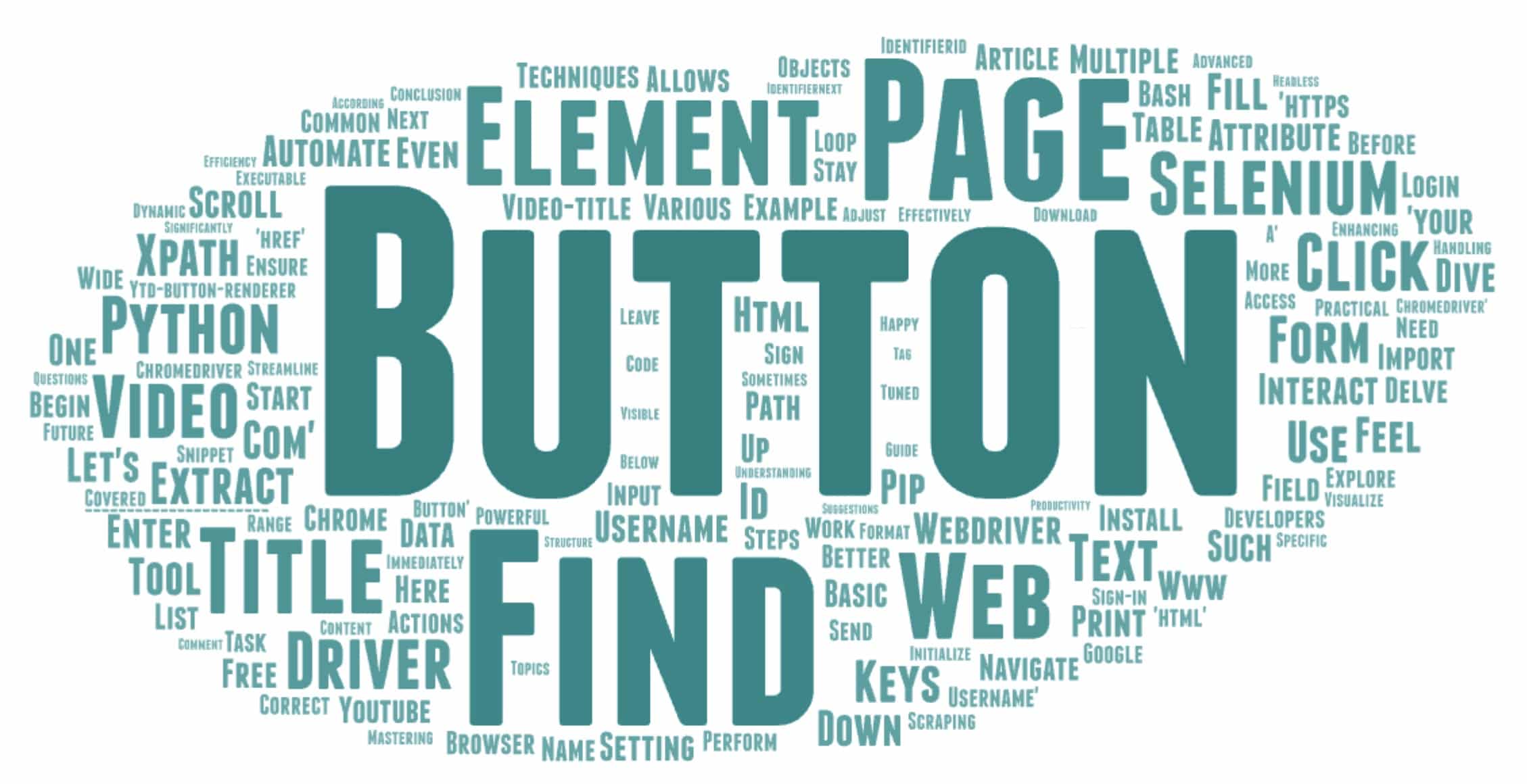
Selenium is a powerful tool for web automation, allowing developers to interact with web pages and perform various actions such as clicking buttons, entering text, and even scrolling. In this article, we’ll explore how to work with objects on a web page and fill out forms using Selenium in Python. We will delve into practical examples, tools, and techniques to automate web interactions effectively.
Setting Up Selenium with Python
Before we dive into working with objects and forms, let’s start with setting up Selenium in Python. Here are the basic steps to get started:
Install Selenium:
pip install seleniumDownload WebDriver: Ensure you have the correct WebDriver for your browser (e.g., ChromeDriver for Google Chrome).
To begin, we need to navigate to a web page. For this example, we will use YouTube.
from selenium import webdriver
# Initialize WebDriver
driver = webdriver.Chrome(executable_path='/path/to/chromedriver')
# Navigate to YouTube
driver.get('https://www.youtube.com')Interacting with Objects on the Page
Finding and Clicking a Button
One common task in web automation is clicking a button. Here’s how you can find a button and click it:
# Find the sign-in button by its XPath
sign_in_button = driver.find_element_by_xpath('//*[@id="buttons"]/ytd-button-renderer/a')
# Click the button
sign_in_button.click()Filling Out Forms
Next, let’s fill out a form, such as entering a username in a login form:
# Find the username input field
username_field = driver.find_element_by_xpath('//*[@id="identifierId"]')
# Enter text into the username field
username_field.send_keys('your_username')
# Find and click the next button
next_button = driver.find_element_by_xpath('//*[@id="identifierNext"]/div/button')
next_button.click()Extracting Text and Attributes
Selenium allows you to extract text and attributes from web elements. This can be useful for various tasks, such as scraping data.
# Find a video title
video_title = driver.find_element_by_xpath('//*[@id="video-title"]')
# Extract and print the text
print(video_title.text)
# Extract and print an attribute
print(video_title.get_attribute('href'))Scrolling the Page
Sometimes, you need to scroll the page to access elements that are not immediately visible.
from selenium.webdriver.common.keys import Keys
# Scroll down the page
html = driver.find_element_by_tag_name('html')
html.send_keys(Keys.PAGE_DOWN)Working with Multiple Elements
If you need to interact with multiple elements, such as a list of videos, you can use a loop:
# Find all video titles on the page
video_titles = driver.find_elements_by_xpath('//*[@id="video-title"]')
# Print the titles of all videos
for title in video_titles:
print(title.text)Tables for Better Understanding
To better visualize the data extraction, let’s use a table format.
| Task | Code Snippet |
|---|---|
| Navigate to YouTube | driver.get('https://www.youtube.com') |
| Find Button | sign_in_button = driver.find_element_by_xpath('//*[@id="buttons"]/ytd-button-renderer/a') |
| Click Button | sign_in_button.click() |
| Fill Form | username_field.send_keys('your_username') |
| Extract Text | video_title.text |
| Extract Attribute | video_title.get_attribute('href') |
| Scroll Page | html.send_keys(Keys.PAGE_DOWN) |
| Multiple Elements | video_titles = driver.find_elements_by_xpath('//*[@id="video-title"]') |
Conclusion
Using Selenium with Python for web automation can significantly streamline tasks such as filling out forms and interacting with web elements. This guide covered the basics of setting up Selenium, navigating web pages, clicking buttons, filling out forms, extracting data, and scrolling pages. By mastering these techniques, you can automate a wide range of web interactions, enhancing productivity and efficiency.






Comments (0)
There are no comments here yet, you can be the first!